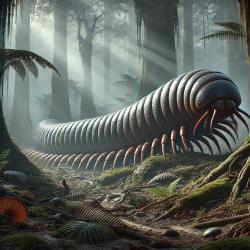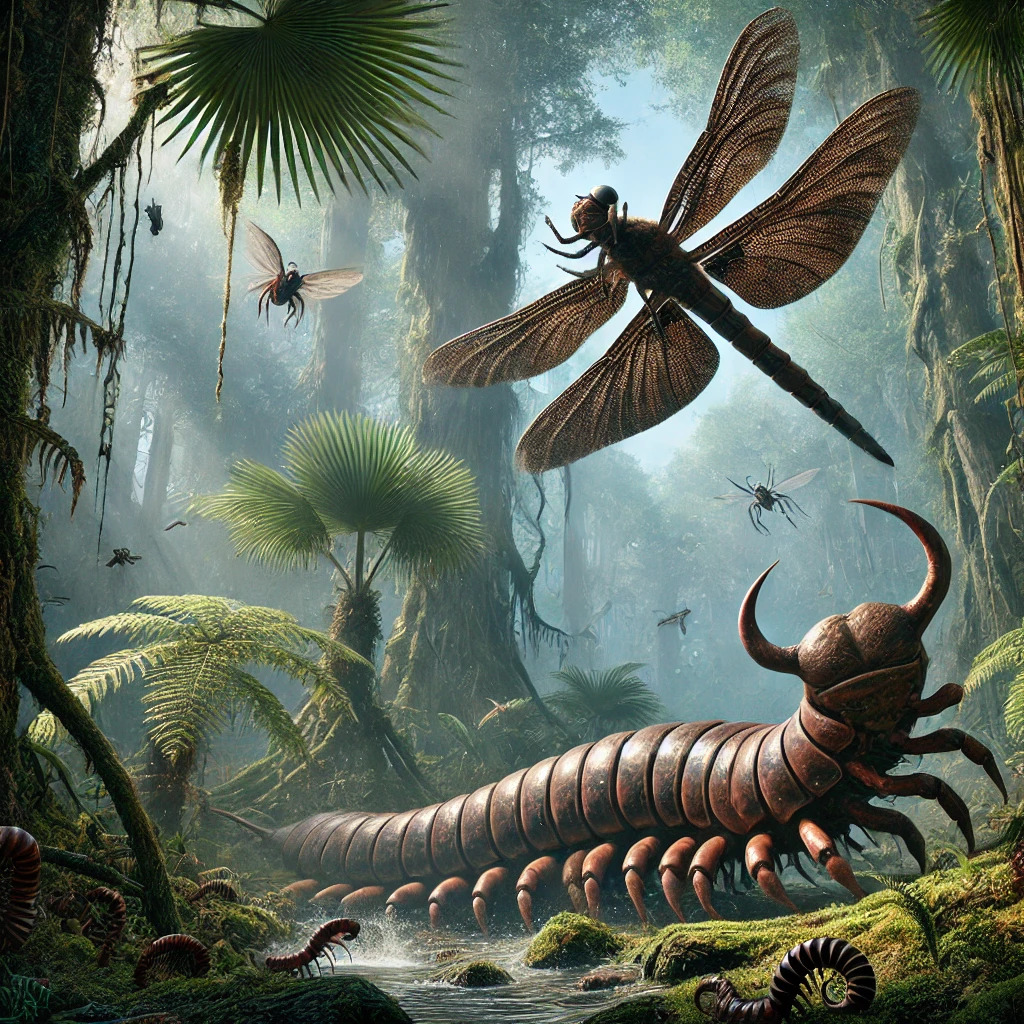The Era of Giant Insects: A World Dominated by Colossal Creatures
In Earth's distant past, long before dinosaurs roamed the planet, another category of creatures reigned supreme: giant insects. During the Carboniferous period (about 359-299 million years ago) and the early Permian period, Earth was populated by colossal arthropods, much larger than any species existing today. But why did these creatures reach such extraordinary sizes? And why did they disappear? Let's explore this fascinating chapter of prehistory.
Geological and Climatic Context
During the Carboniferous period, our planet was characterized by a warm and humid climate, with vast forests of ferns and lycophytes dominating the landscape. However, the most crucial factor was the concentration of oxygen in the atmosphere, which exceeded 30%, compared to the 21% of today. This abundance of oxygen played a vital role in the growth of giant insects, as their respiratory system, based on the diffusion of oxygen through tracheal tubes, was more efficient in such a richly oxygenated environment.
The Giants of the Era
Some of the most impressive prehistoric arthropods of that time include:
Meganeura, a giant dragonfly with a wingspan of over 70 cm, likely ruling the skies as a formidable predator.
Arthropleura, a giant millipede that could exceed 2.5 meters in length, moving through the dense Carboniferous forests.
Pulmonoscorpius, a terrestrial giant scorpion nearly one meter long, one of the largest ever recorded.
Giant marine arthropods, such as some Eurypterids, also known as sea scorpions, which could grow over two meters in length.
Palaeodictyoptera, a group of primitive winged insects, some with an impressive wingspan exceeding 50 cm.
Mazothairos, another large prehistoric insect resembling a dragonfly, with a significant wingspan.
Homaloneura, an ancient insect sharing traits with modern cockroaches and grasshoppers.
Titanoptera, a later group of gigantic predatory insects, appearing in the Permian period, with large wings and powerful mandibles, similar to mantises.
Artistic Gallery of giants prehistoric arthropods
 |
 |
 |
 |
 |
 |
Why Did They Grow So Large?
The most widely accepted explanation for their enormous size is the direct relationship between oxygen availability and insect respiration. Since these organisms lack lungs, oxygen diffuses directly into their tissues through a system of tracheae. With higher oxygen levels, this process was more efficient, allowing them to grow much larger than what is possible today.
The Extinction of the Giants
As the Permian period progressed, the oxygen concentration in the atmosphere gradually decreased, leading to drastic environmental changes. Additionally, the emergence of new vertebrate predators, such as the first reptiles and terrestrial amphibians, introduced increased competition for survival. These factors, combined with major climatic shifts, eventually led to the extinction of these colossal arthropods.
Could Giant Insects Return?
Today, with oxygen levels much lower than during the Carboniferous period, the excessive growth of insects is naturally limited. However, scientific experiments have shown that in environments with increased oxygen concentration, some insects can grow larger than normal. This raises an intriguing question: if atmospheric conditions were to change again, could we witness the return of giant insects?
Curiosity: Could a Modern Human Survive in the Era of Giant Insects?
If a modern human were transported back in time to the Carboniferous period, they would find themselves in a vastly different environment. The high oxygen concentration could initially cause health issues, such as oxidative stress and hyperoxia, an excess of oxygen in body tissues. However, the human body might adapt over time, similar to how athletes train in varying oxygen conditions. Another factor to consider would be the dangers of the environment: with giant predators like Meganeura and Arthropleura, humans would need to adopt survival strategies similar to early hominins, relying on intelligence and the ability to build safe shelters.
The era of giant insects is a fascinating chapter in Earth's history, reminding us how evolution and environmental conditions can shape life in surprising ways. While today's insects are much smaller, the past shows us that, under the right circumstances, the world could once again be inhabited by colossal arthropods.








Leave a Comment